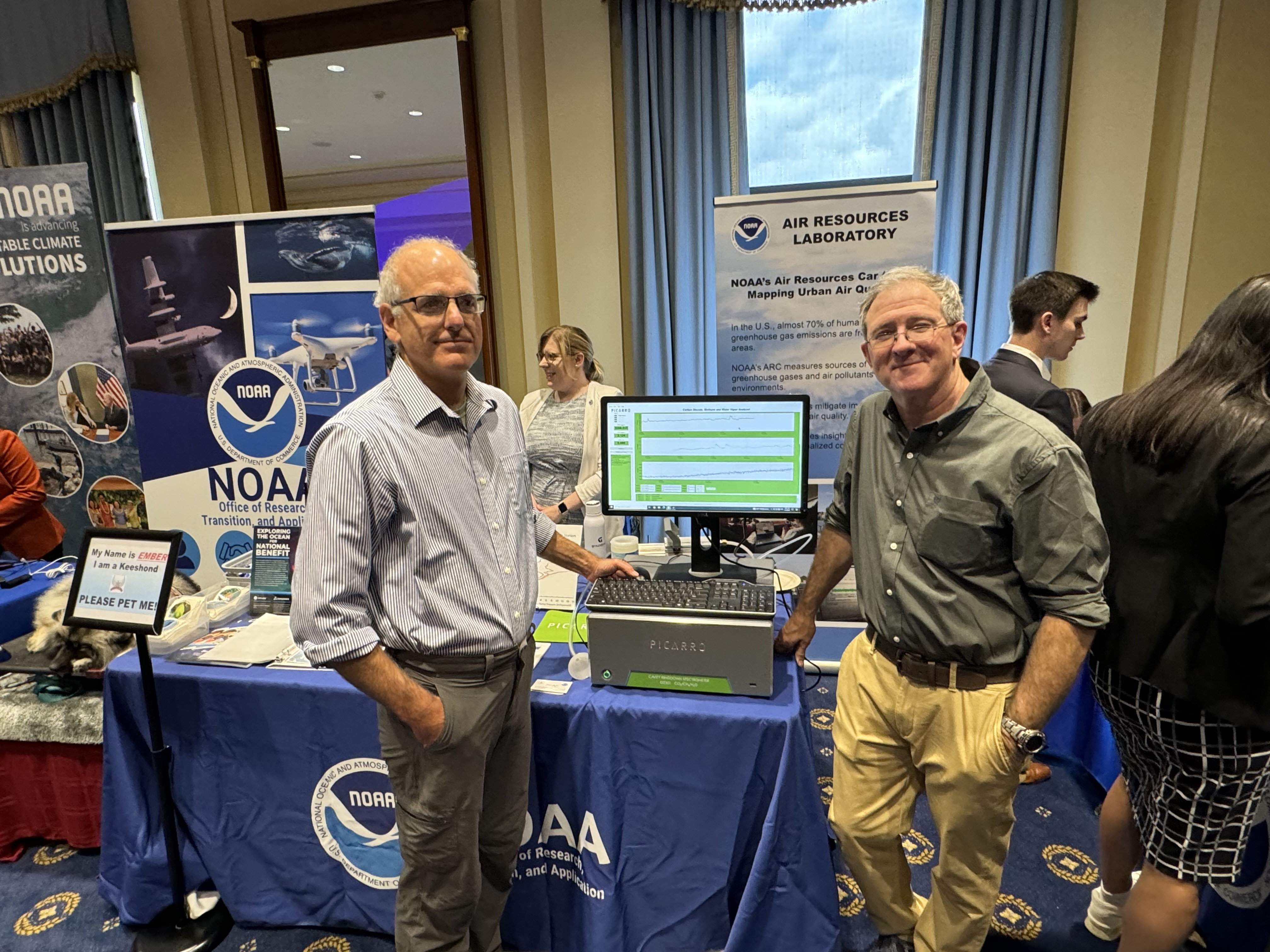ARL Weekly News – July 8, 2024
| Recent Events |
NOAA Day on the Hill

Paul Kelley (L) and Winston Luke (R) at the ARL table during the NOAA Day on the Hill. Photo Credit: Ariel Stein
On Wednesday, 10 July, Ariel Stein, Paul Kelley and Winston Luke attended the NOAA Day on the Hill, an event organized by the Office of Legislative and Intergovernmental Affairs (OLIA) to showcase NOAA’s mission to Members of Congress and their staff, and displayed an operational Picarro analyzer for the measurement of CO2, CH4, and H2O. They also displayed an informational banner and provided handouts describing and highlighting ARL’s Greenhouse Gas Measurement Program, and facilitated the display and highlighting of GML’s ozonesonde research program. The event was well-received and attended, and featured addresses by five members of the U.S. House of Representatives and high-ranking NOAA officials.
| Presentations and Publications |
Dust Alliance for North America
Barry Baker presented “Overview of NOAA’s Dust Predictions from high resolution regional to global S2S: GEFS-Aerosol, NAQFC, RRFS and UFS-Aerosols” on Friday, 12 July. This presentation outlined NOAA and ARL’s role in NOAA dust forecasting
Accepted for Publication
Sayantan, S., D. Ahn, C.P. Loughner, and R.R. Dickerson (2024), Influence of synoptic weather patterns on methane mixing ratios in the Baltimore/Washington region, Atmospheric Environment, in press.
Abstract: We investigated winter methane observations from three towers in the Baltimore-Washington metropolitan region (BWR) including a ten-year record, 2013-2022, from Bucktown (BUC), Maryland located ∼100 km southeast of these urban areas. We combined the observations with a HYSPLIT clustering analysis for all years to determine the major synoptic patterns influencing methane mixing ratios at BUC. The cluster analysis revealed four characteristic pathways of transport into BUC – from the west (W), southwest (SW), northwest (NW), and east (E) and these showed significant differences in methane mixing ratios. We corroborated our conclusions from BUC using 2018-2022 data from towers in Stafford, Virginia (SFD) and Thurmont, Maryland (TMD); results confirmed the influence of synoptic patterns on methane concentrations. No significant temporal trend was detected overall or within any cluster. For BUC, low concentrations were typically observed for air off the North Atlantic Ocean (E cluster) and flowing rapidly behind cold fronts (NW cluster). High methane mixing ratios were observed, as expected, in the W cluster due to the proximity of the BWR and oil and gas operations in the Marcellus. Less expected were high mixing ratios for the SW cluster – we attribute these to agricultural sources in North Carolina. Swine production, ∼500 km to the SW, impacts methane in eastern Maryland as much or more than local urban emissions and oil and gas operations, 100–300 km to the west; results support the high end of emission estimates for animal husbandry and suggest strategies for future research and mitigation.

